Here’s the story behind Bujang Senang, a crocodile that once terrorized Sarawak
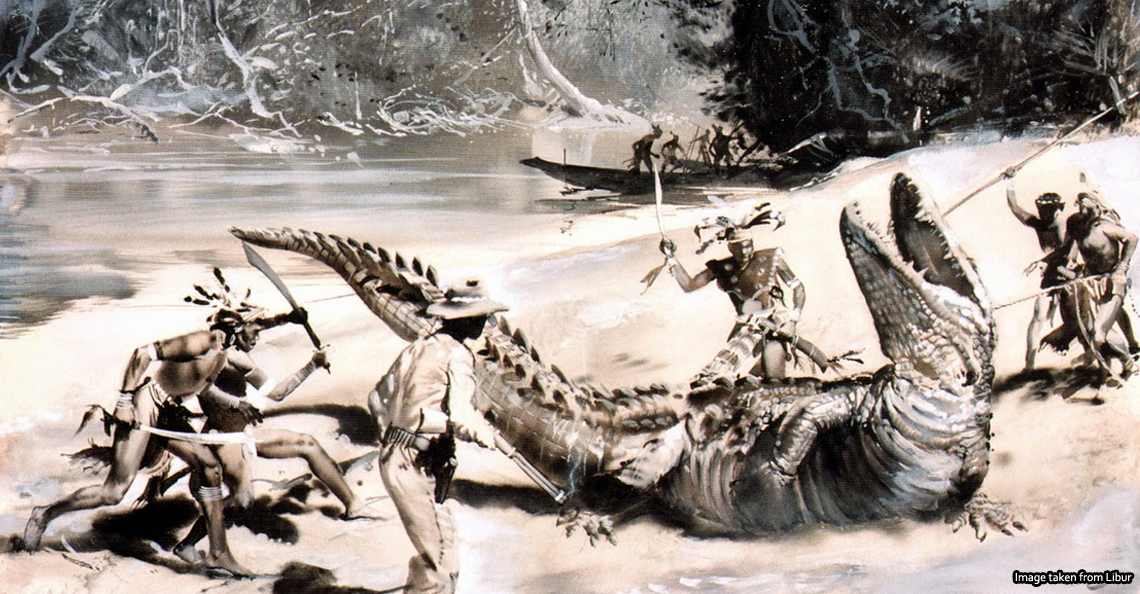
- 3.1KShares
- Facebook2.6K
- Twitter52
- LinkedIn89
- Email97
- WhatsApp221
[Artikel ni asalnya ditulis rakan rakan kami kat SOSCILI. Untuk baca dalam BM, klik sini!]
Other than being known as the land of the hornbills, Sarawak is also known for its crocodiles. This year alone, we’ve found five instances of crocodile attacks in East Malaysia:
- A student waiting for his SPM results was taken by a crocodile at Sungai Tapang, Ulu Peking, Sarawak. (23 Feb 2017)
- A teenage boy died from a crocodile attack after falling into the Kampung Kawi River, in Bintangor, Sarawak. (22 May 2017)
- An estate worker was gobbled up in front of his friend, while checking his fishing line at Sungai Pelasan, Sarawak. (14 Jul 2017)
- A man was eaten by a crocodile while fishing with his cousin at the bank of Sungai Kuala Besar, Kampung Hulu Tambak, Sarawak. (27 Sep 2017)
- An estate worker went missing, believed to have been chomped by crocodiles at Lahad Datu, Sabah. (5 Nov 2017)
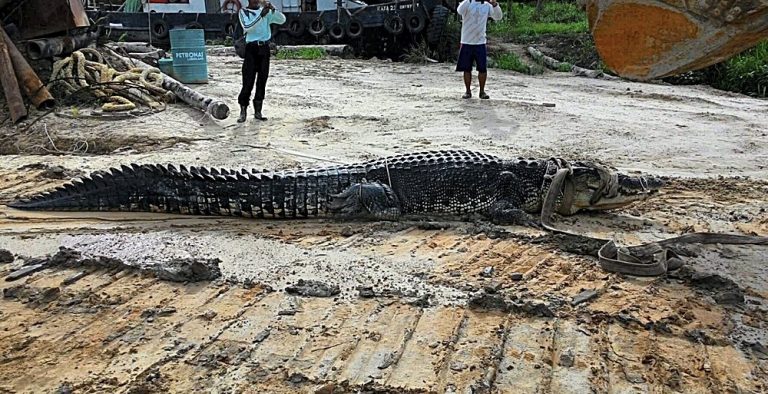
Those were among the crocodile attacks reported so far. From 2007 to 2013, the Ministry of Women, Family and Community Development had stated that out of 42 reports of crocodile attacks in Malaysia, 40 of them are from Sarawak. These attacks brings to mind the tale of Bujang Senang, a crocodile that once terrorized the Batang Lupar river area back in the 1940s.
While Bujang Senang had in the past been rumored to be as big as a bus, being able to eat a full-grown man in one bite, you might be shocked to know that…
The Ibans believe that Bujang Senang used to be… a man.
Some Ibans in Sarawak believed that the giant crocodile Bujang Senang was actually a human who was cursed post-mortem to become a crocodile. According to the legend, Bujang Senang used to be an Iban warrior named Simalungun. It was said the Simalungun was a famous warrior back when people practiced ‘mengayau’ (cutting off and collecting the enemies’ heads), and those who stood before him had no chance of defeating him in battle.
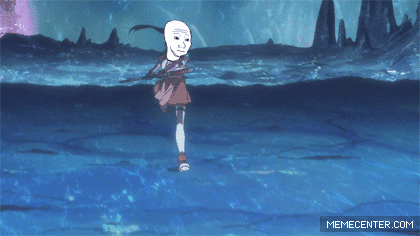
This was probably due to the fact the Simalungun practiced a mystic art that caused his body to become invulnerable to weapons, and his enemies knew about that. They also knew that practitioners of the art had to observe a certain taboo, and if Simalungun was to break that taboo, he would become vulnerable again. Simalungun’s taboo was a closely-kept secret, so his enemies decided to kidnap his wife and make her tell them what his taboo is.
Simalungun, realizing that his wife had been kidnapped by his enemies, went to confront them at the Batang Lupar river. As the story goes, his enemies released his wife, but before Simalungun can get to her they impaled her with a javelin, killing her on the spot. This caused Simalungun to fly into a rage, and a terrible battle ensued. However, his enemies soon noticed their weapons worked on Simalungun as soon as he stepped into the river.
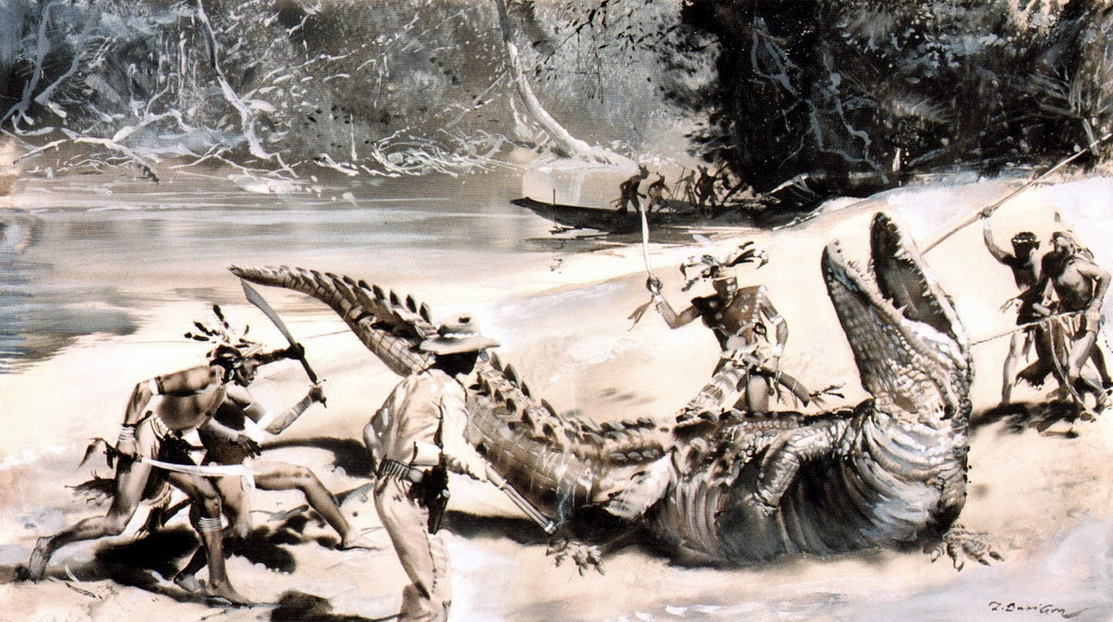
It didn’t take long for them to come to the conclusion that Simalungun’s taboo was to never stand in a river, and despite Simalungun’s rage, he was soon defeated. Both his and his wife’s corpses was left to sink in the river, but for unknown reasons the deities residing in the river cursed Simalungun’s body to become a giant crocodile, identified with a white stripe on its back. Ever since then, the crocodile, called ‘Bujang Senang’, had terrorized the descendants of his killers living near Batang Lupar.
But why is it called ‘Bujang’ (bachelor) when according to myth, Simalungun was married?
“The colloquial name of ‘bujang’ means someone who is a champ, a great person, and it’s a sign of respect to call a man bujang. So these wild reptiles are called bujang as a sign of respect.” – Indet Sanabong, Crocodile Shaman. Excerpt from Kosmo.
Bujang Senang’s heyday was said to be in the 1940s, but after that the tales of its atrocity died down… for a while. In the 1980s, Bujang Senang made a comeback.
Bujang Senang raged again, but this time it was defeated… with a nail bullet
On his return in 1982, Bujang Senang’s first reported victim was Headman Bangan from the Pali Longhouse in Sri Aman. It was said that the headman was attacked while he was fishing for shrimps by the riverside. His brother, Kebir, who was with him at that time, failed to rescue him. But he did saw a white streak down the crocodile’s back, leading him to believe that what they were dealing with was the legendary Bujang Senang.

Following that incident, the local police launched ‘Operasi Buaya Ganas‘ (Ferocious Crocodile Ops) at all big rivers in Sarawak, but they couldn’t find Bujang Senang.
“Bujang Senang continued to rage, and between 1982 and 1991 it was believed that 13 people fell victim to the giant beast’s rage. His reign of terror reached its peak in May 1992, when the beast snatched his 14th victim, 20-year-old Dayang, daughter of Bayang, when the Iban lady was crossing the Pelaban River with her mother.” – Excerpt from BH Online.
The attack prompted both the police and the villagers to hunt down Bujang Senang. Within four hours, Bujang Senang was cornered, but they failed to kill him with javelins and normal bullets. So a shaman suggested that they use nails as bullets. The suggestion seemed to work, as Bujang Senang finally fell after receiving 40 shots of 10cm nails.
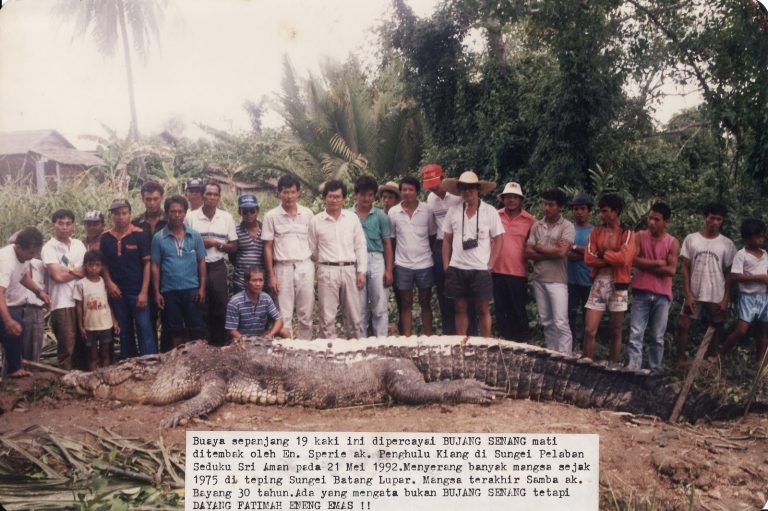
The crocodile’s corpse did have a white stripe on its back, but it’s not the size of a bus as some have claimed. It was 5.46 meters long, and its belly had a girth of 2.12 meters. Despite the capture, some remained skeptical with the history and legend of Bujang Senang, while others were convinced that the real Bujang Senang is still out there, and what they killed wasn’t really Bujang Senang.
Despite its fame, Bujang Senang wasn’t the only famous crocodile who attacked people
While in the beginning we mentioned a few cases of crocodile attacks, it would seem that the cases were isolated incidents, judging by the fact that none of the crocodile perpetrators were given specific names. Bujang Senang, on the other hand, received a somewhat legendary status in Malaysia, but there are other notorious crocodiles in Sarawak’s history, all with Bujang at the front of their names: Bujang Samarahan, Bujang Tisak, Bujang Belawai, Bujang Subis and Bujang Seblak.

In 2001, the crocodile Bujang Subis was shot dead after eating a 10-year-old boy. The boy’s father, upon cutting open the crocodile’s belly, discovered both his son’s arms and legs inside. The boy’s head and other parts were later found floating around at the Niah National Park.
Later, in 2012, the country was again shocked by another crocodile attack, this time by one called Bujang Seblak. The crocodile had eaten a woman named Siah Munsong. A hunt ensued, using both modern and traditional methods.
“Even though we tried to bait Bujang Seblak, it was smart enough to escape the traps we set for him. However, two other medium-sized crocodiles we trapped instead. We believe these two were his minions.” – from Utusan Malaysia.

Two weeks after he ate Siah Munsong, Bujang Seblak was finally caught by a crocodile shaman. This time, they knew for sure it was Bujang Seblak, judging by the two gunshot wounds on his eye and jaw from when he was carrying Siah’s corpse. Upon weighing the crocodile, they found its weight to be more than 200kgs.
What’s interesting about Bujang Seblak’s capture was that he was killed by a slap. A shaman’s spell-infused slap.
“I had to slap Bujang Seblak in the head to kill him instantly. This was because he tried to resist, and I had to think of my safety as well because the boat I was riding can’t handle his weight.” – Indet Sanabong, Crocodile Shaman. Taken from Utusan Malaysia.
The handling of crocodiles sometimes involve mystical methods
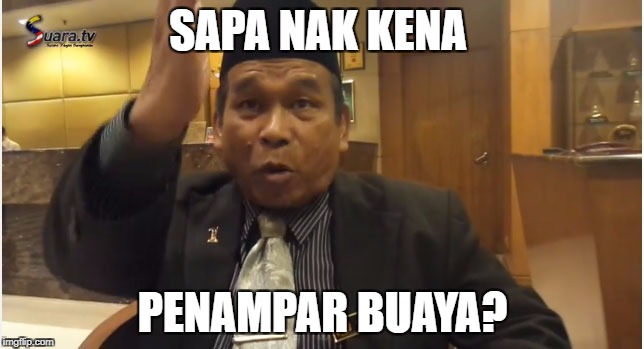
Indet Sanabong is a famous crocodile hunter in Sarawak: whenever there is a crocodile attack, people will seek him out. Indet was also the shaman who slapped Bujang Seblak dead, but according to him he had already captured tens of thousands of crocodiles all over Sarawak before that. He learned how to catch crocodiles from a teacher in Sipitang, Sabah.
“I put five of my children through school using the money I got from selling crocodiles to crocodile parks and private buyers. But as soon as I found out that my actions were against the law, I stopped.” – Indet Sanabong, Crocodile Shaman for Kosmo.
According to Indet, crocodiles don’t just attack anybody, as they prefer people who are in a ‘puni’ or ‘punik’ state. No, that’s not a typo.
“According to the Ibans, ‘puni’ is sort of like longing for something but not getting it, but in this case it’s more like an unfulfilled promise by someone. For example, someone was invited to eat, but instead of eating, he did other stuff. That person is said to be in a puni state.” – Indet Sanabong, Crocodile Shaman for Kosmo.
So basically, puni is like some sort of unfulfilled wish or unfinished business. Indet further explained that puni can also happen to crocodiles who have eaten people before. This is because once a crocodile got a taste of human flesh, it will start to like it and actively seek it out, by attacking people. When this happens, Indet have to end the crocodile’s puni by feeding it a charmed bait.

Indet claimed that only crocodiles who had eaten humans before will eat the charmed bait. The bait, on the other hand, is made of the meat of a white dog placed on three fishing hooks, all tied to a rope made of living rattan. He further claimed that a crocodile that eats humans already had a curse on them: even without eating the bait, they can still be killed.
“The killing won’t involve the use of firearms or sharp weapons, but just my bare hands. After reciting a spell, I would slap the crocodile’s head and it will instantly die.” – Indet Sanabong, Crocodile Shaman, for Kosmo.
Sarawak’s trying to reduce the number of crocodiles, but maybe their population alone isn’t the problem
Starting October this year, Sarawak’s Forestry Department (JHS) approved 10 licenses to catch crocodiles in Sarawak. Most of the license holders come from the Batang Lupar area, as there’s a high number of crocodiles there.
Last year, it was estimated that there were more than 20,000 adult-sized crocodiles in Sarawak. Some rivers were even estimated to have an average of 14 crocodiles for every kilometer of their length. This was the reason the state government declared 60% out of that 20 thousand can be hunted. Besides that, the Convention on International Trade in Endangered Species (CITES) had already lowered the status of crocodiles (specifically, Crocodylus porosus) from Appendix I to Appendix II.
“We managed to downgrade the crocodiles from Appendix I to Appendix II, meaning that the species can be hunted, killed and their meat and skin can be marketed globally.” – Sapuan Ahamad, Director of Sarawak’s Forestry Department, for Utusan Borneo.
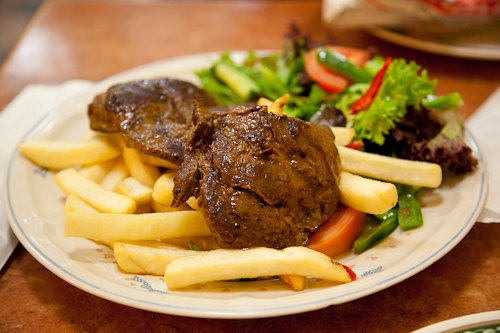
However, the effort to cut down on the crocodiles’ population didn’t go over well with the culture and beliefs of Sarawakians, especially the Ibans. This is because some of them believe that crocodiles are manifestations of a river’s spirit, or Ribai. Therefore, they try their hardest to not kill a crocodile, as it may bring them misfortune later.
“The people living by the riversides still believe that killing a crocodile is an unbreakable taboo… Whatever their religion is, when it comes to crocodiles, they will try their hardest to not kill a crocodile, as they fear their lives would be in danger the next time they are near rivers.” – Prof Madya Dr. Ruhana Hassan, Universiti Malaysia Sarawak, for Harian Metro.
Even though Sarawak’s Forestry Department did distribute crocodile hunting licenses, at the same time they are encouraging the people of Sarawak to run crocodile farms. According to them, these farms won’t only provide them with crocodile skin and meat, but can also be a tourist attraction, like the Miri Crocodile Farm that pulls in a huge number of tourists to Miri, Sarawak.
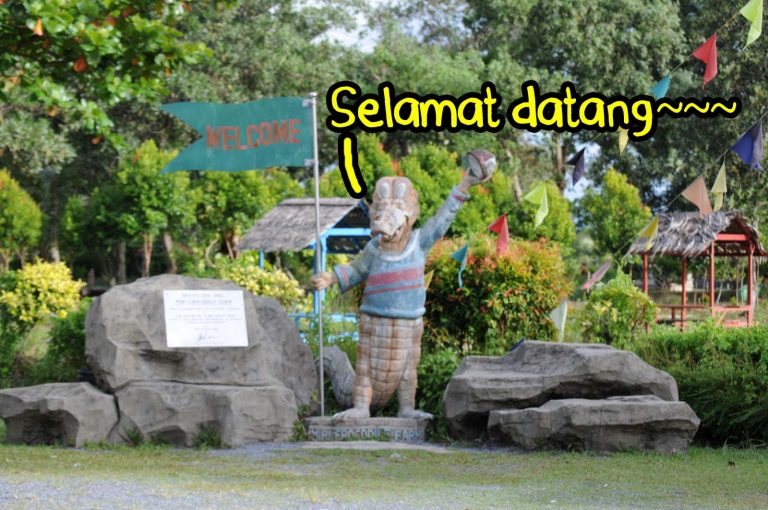
The government’s permission to hunt crocodiles can be said to be an effort to control their population, and consequently the risk they pose to humans. However, some researchers believe that the crocodile attacks are our fault to begin with, because of river pollution.
“The pollution of rivers is also a factor in crocodile attacks. We have found plenty of plastic bags in the bellies of the crocodiles we’ve operated on. We have found that crocodiles are attracted to trash as they may think that there is food in the plastic bags.” – Christopher Kri Ubang, a wildlife officer from the Sarawak Forestry Corporation (SFC), for Utusan Borneo.
According to media reports, the state of rivers in Malaysia are getting worse. Besides trash, rivers are also exposed to pollution from factories and industries.
The skull of Bujang Senang displayed at the Sarawak Museum may invoke legends of warriors and curses from a bygone era in the visitors’ minds. However, at the rate things are going now, one might wonder if crocodile legends a century from now will involve a superhero whose powers came from being bitten by radioactive crocodiles instead.
- 3.1KShares
- Facebook2.6K
- Twitter52
- LinkedIn89
- Email97
- WhatsApp221



